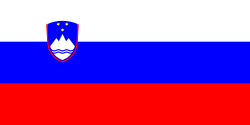This article needs additional citations for verification .(March 2008) |

The National symbols of Slovenia are the symbols used in Slovenia and abroad to represent the nation and its people.
This article needs additional citations for verification .(March 2008) |

The National symbols of Slovenia are the symbols used in Slovenia and abroad to represent the nation and its people.


This article includes a list of general references, but it lacks sufficient corresponding inline citations .(March 2008) |